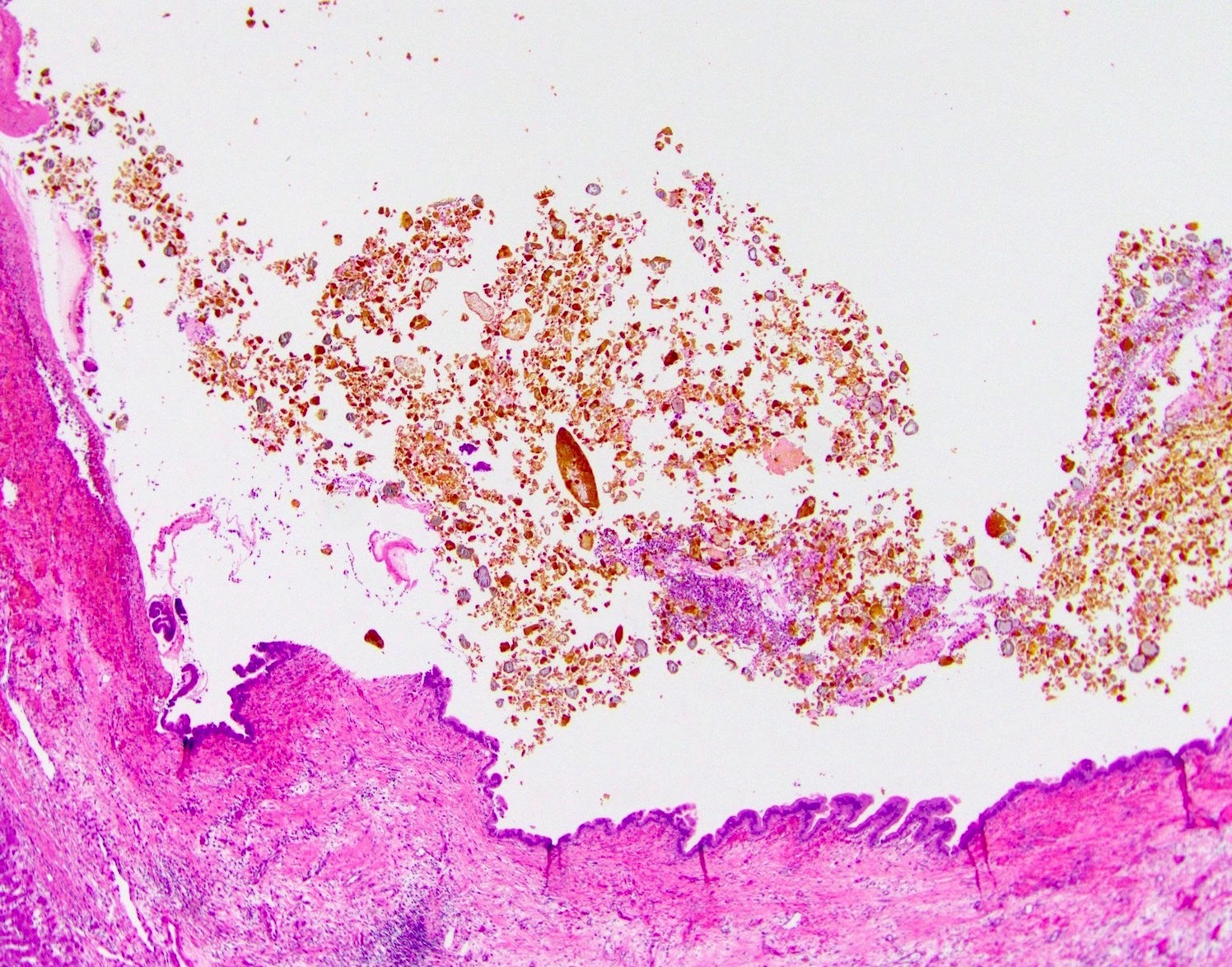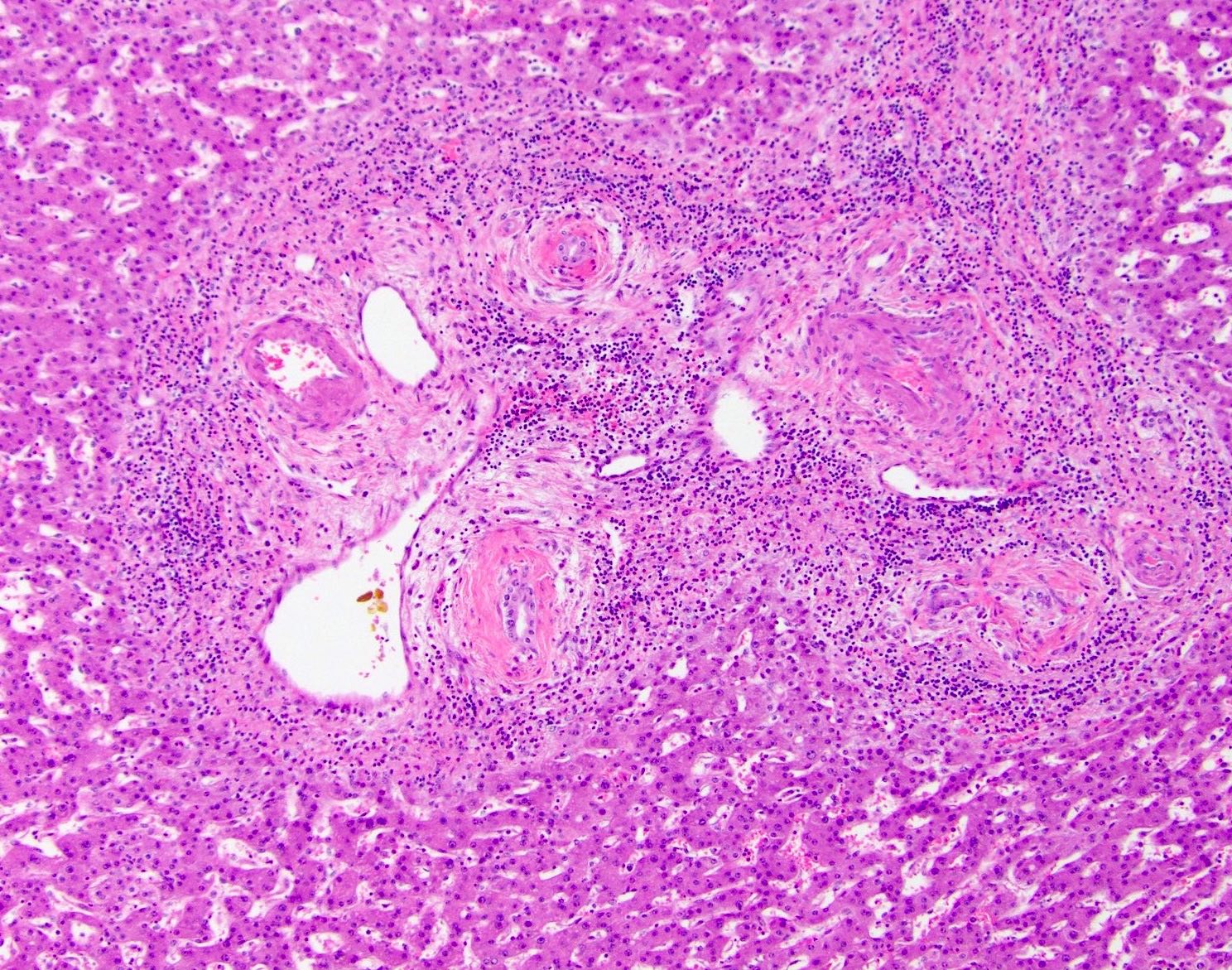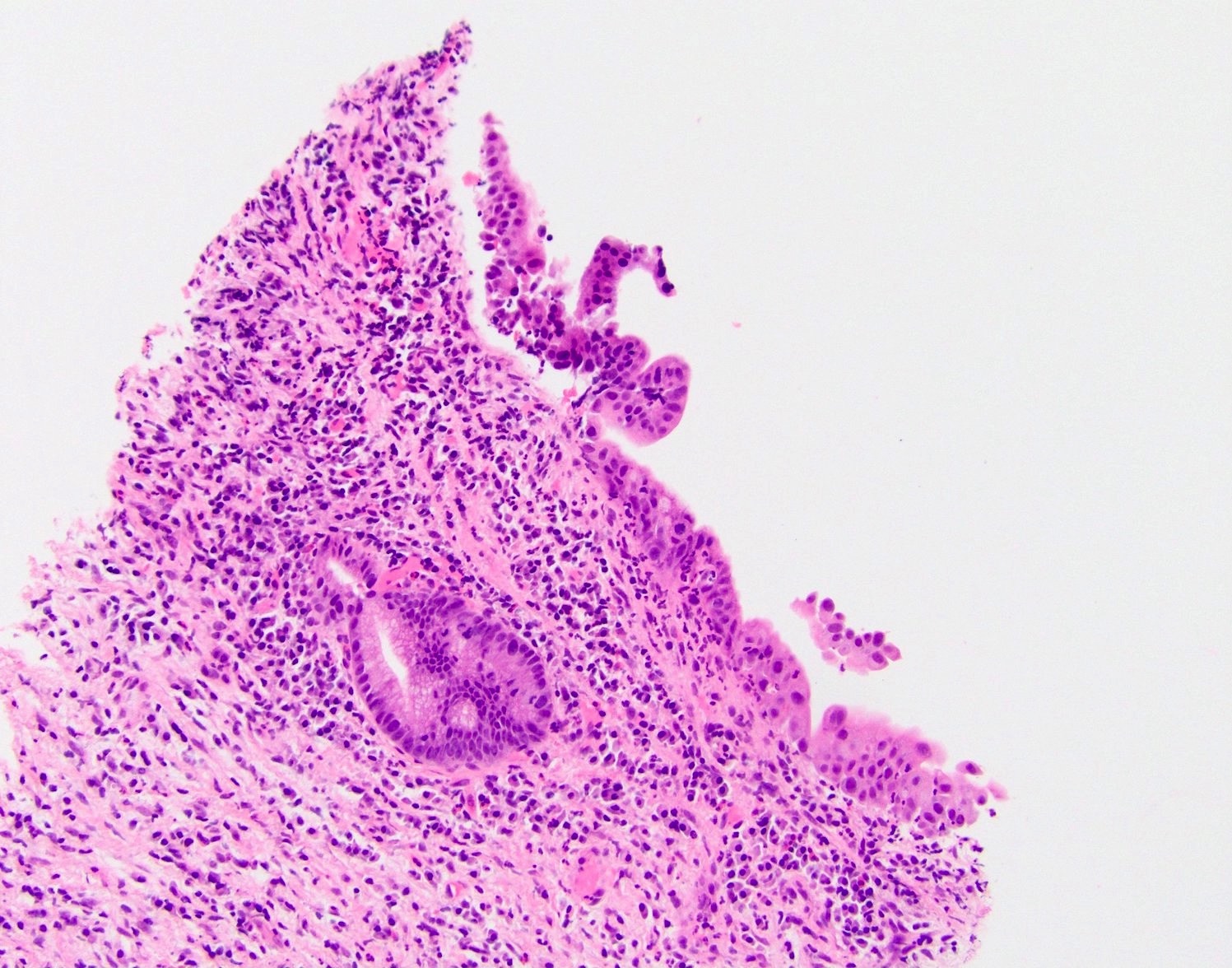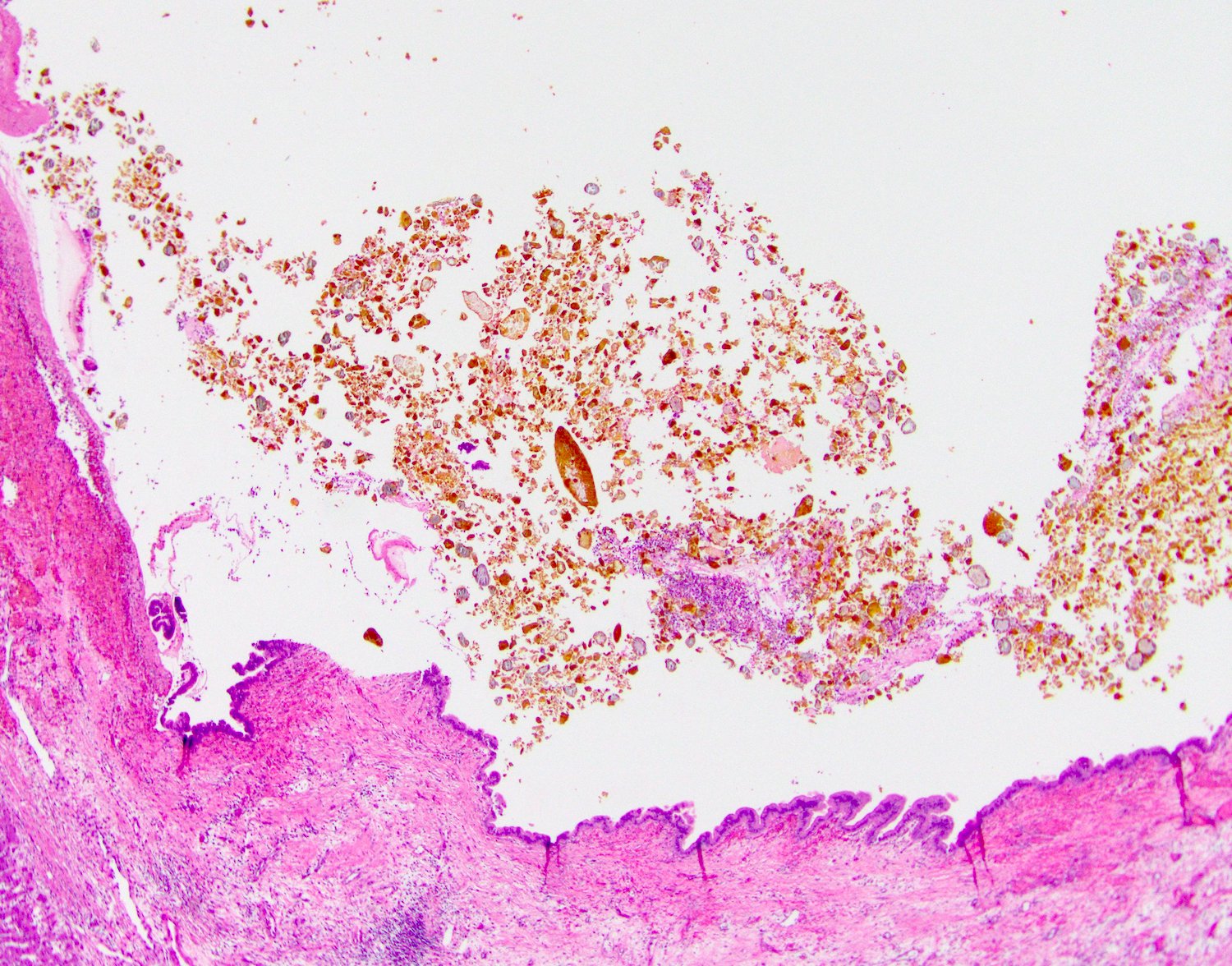Table of Contents
Definition / general | Essential features | Terminology | ICD coding | Epidemiology | Etiology | Clinical features | Radiology description | Radiology images | Prognostic factors | Case reports | Treatment | Clinical images | Gross images | Microscopic (histologic) description | Microscopic (histologic) images | Sample pathology report | Differential diagnosis | Board review style question #1 | Board review style answer #1 | Board review style question #2 | Board review style answer #2Cite this page: Gonzalez RS. Recurrent pyogenic cholangitis. PathologyOutlines.com website. https://www.pathologyoutlines.com/topic/liverorientalcholangiohepatitis.html. Accessed April 23rd, 2024.
Definition / general
- Recurrent attacks of obstructive cholangitis due to Escherichia coli infection in the setting of liver fluke infection or hepatolithiasis
Essential features
- Recurrent bile duct injury due to flukes, hepatoliths or bacterial infection
- Treatment often requires surgery
- Patients are at increased risk for cholangiocarcinoma
Terminology
- Sometimes termed “Oriental cholangiohepatitis” or “primary hepatolithiasis” (Adv Anat Pathol 2011;18:318)
ICD coding
- ICD-10: K83.09 - other cholangitis
Epidemiology
- Generally occurs in Southeast Asia or in patients from that region but may occur elsewhere (Neth J Med 2016;74:401, Hawaii Med J 2007;66:9, World J Surg 2005;29:858)
Etiology
- Patients often have liver flukes (e.g. Clonorchis sinensis) or hepatolithiasis as the initial inciting factor (J Emerg Med 2012;43:e107)
- E. coli, found in the bile of most patients during acute attacks, appears to be the second inciting factor
Clinical features
- Usually occurs in young adults of either sex; more common in rural areas (Abdom Radiol (NY) 2017;42:46)
- Symptoms: acute or recurrent bouts of suppurative cholangitis accompanied by abdominal pain, fever and jaundice (Semin Liver Dis 2011;31:33)
- Patients are at increased risk for developing cholangiocarcinoma
Radiology description
- Dilation of extrahepatic bile ducts with relatively mild / no dilation of intrahepatic ducts, localized dilatation of the lobar or segmental bile ducts, increased periportal echogenicity, segmental hepatic atrophy, gallstones (Clin Res Hepatol Gastroenterol 2012;36:515, Abdom Radiol (NY) 2017;42:46)
- Peripheral ducts may taper abruptly (Abdom Radiol (NY) 2017;42:2964)
- Localized intrahepatic segmental ductal stenosis may be present, especially in the lateral segment of the left lobe or posterior segment of the right hepatic lobe
Prognostic factors
- Patients with bilateral disease or who do not undergo operative treatment fare worse (ISRN Surg 2013;2013:536081)
Case reports
- 39 year old Korean woman with acute cholecystitis (Case Rep Gastrointest Med 2017;2017:8575674)
- 48 year old Vietnamese woman with abdominal pain (Dig Dis Sci 2016;61:3147)
- 74 year old South Asian man with symptoms concerning for cholangiocarcinoma (Int J Surg Case Rep 2012;3:235)
Treatment
- Some cases require surgery (Int J Surg. 2014;12:789, HPB (Oxford) 2016;18:821)
- Other cases may be managed endoscopically (stone extraction, sphincterotomy, stent placement) (J Community Hosp Intern Med Perspect 2015;5:27858, Dig Dis Sci 1997;42:865)
Microscopic (histologic) description
- Dilation and fibrosis of bile ducts with acute or chronic inflammation (Adv Anat Pathol 2011;18:318)
- Other findings include hepatic / intraductal abscesses and secondary sclerosing cholangitis
- Liver flukes or bile duct stones may be seen
Microscopic (histologic) images
Sample pathology report
- Liver, right lobe, partial hepatectomy:
- Bile ducts with acute and chronic inflammation, fibrosis and hepatolithiasis (see comment)
- Background liver parenchyma with reactive change
- Comment: The findings are compatible with the patient’s reported history of recurrent pyogenic cholangitis. The examined sections are negative for dysplasia or malignancy.
Differential diagnosis
- Caroli syndrome:
- Congenital and therefore usually presents earlier in life
- Primary sclerosing cholangitis:
- Lesser degree of inflammation
- Hepatoliths generally not present
- Segmental cholangiectasia:
- High clinical and pathologic overlap, except this disease occurs in non-Asian patients (Hum Pathol 2015;46:426)
Board review style question #1
Board review style answer #1
Board review style question #2
- A 50 year old Asian woman is found to have a liver mass. Biopsy is consistent with cholangiocarcinoma. She endorses a history of recurrent abdominal pain and fevers. What is the most likely underlying diagnoses?
- Benign recurrent intrahepatic cholestasis
- Crohn’s disease
- Longstanding drug induced liver injury
- Primary biliary cholangitis
- Recurrent pyogenic cholangitis
Board review style answer #2










